La Jolla Tide Pools San Diego: Where to Go & What to See
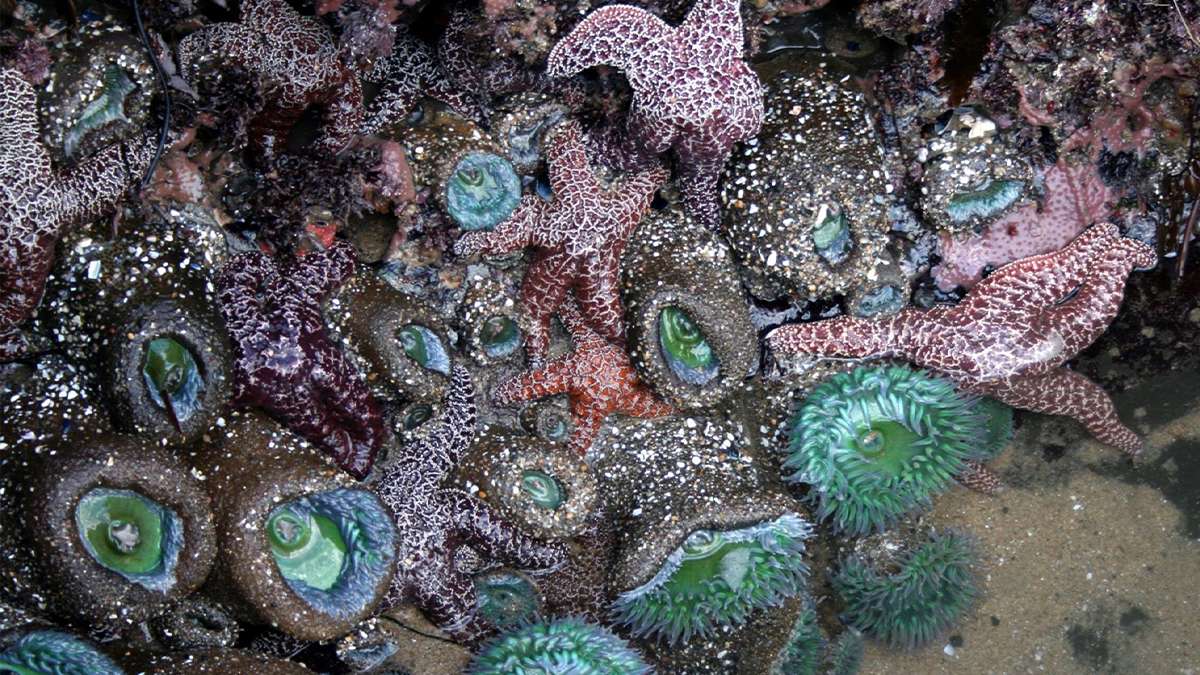
Discover the magic of nature by exploring the fascinating world of tide pools in San Diego, where unique marine life unfolds at your feet. From the picturesque La Jolla to the historic Point Loma and beyond, we journey through the best tide pool spots in the city, harboring an assortment of colorful sea stars, elusive sea hares, and more intriguing creatures.
If you’re dreaming of a fascinating and immersive adventure into marine life, exploring tide pools in San Diego is an excellent choice. The area boasts an array of remarkable tide pool locations like La Jolla Shores Beach, Point Loma tide pools San Diego, and others, teeming with a colorful medley of sea stars, sea hares, and sea cucumbers.
With the Pacific Ocean as its backdrop, San Diego provides an unforgettable tide pooling experience. Let’s dive into the vibrant world of tide pools and discover the best spots that San Diego tide pools have to offer!
What are Tide Pools?
Tide pools are charming natural wonders found along the coastline where seawater is trapped during low tides. They form in the rocky areas of the intertidal zone, providing a miniature and accessible window into lush marine ecosystems teeming with diverse marine life, such as sea stars, sea hares, and sea cucumbers.
Where to Find the Best Tide Pools in San Diego
Cabrillo National Monument Tide Pools
Difficulty: Moderate (rocky, some slippery surfaces)
Searching for “Cabrillo tide pools San Diego”? Stretching towards the west of the Cabrillo National Monument in San Diego Bay, this remarkable collection of tide pools is home to a myriad of marine creatures. Graced by the sparkling Pacific Ocean, this rocky area reveals its stunning intertidal zone when low tide hits.
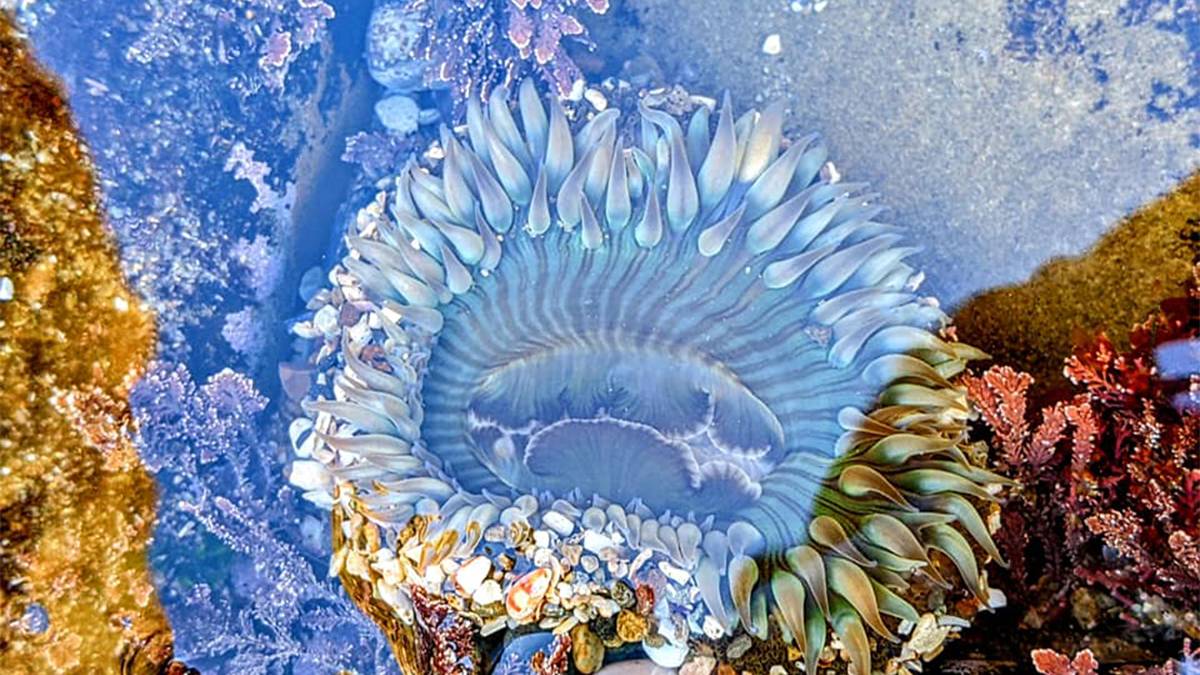
As you meander around the Cabrillo tide pools in San Diego, be on the lookout for sea stars, sea hares, and sea cucumbers, which add vibrant dashes of color to the pools. Be patient, take the time to observe, and you’ll be rewarded with close-up encounters with these incredibly fascinating tide pool animals unique to San Diego.
Dike Rock Tide Pools (La Jolla)
Difficulty: Easy
As a part of the La Jolla Underwater Park, the Dike Rock Tide Pools are a hidden gem located just north of Scripps Pier. Home to an abundance of marine life, you will find remarkable creatures like sea hares, sea stars, and sea cucumbers thriving in this intertidal zone during low tide.
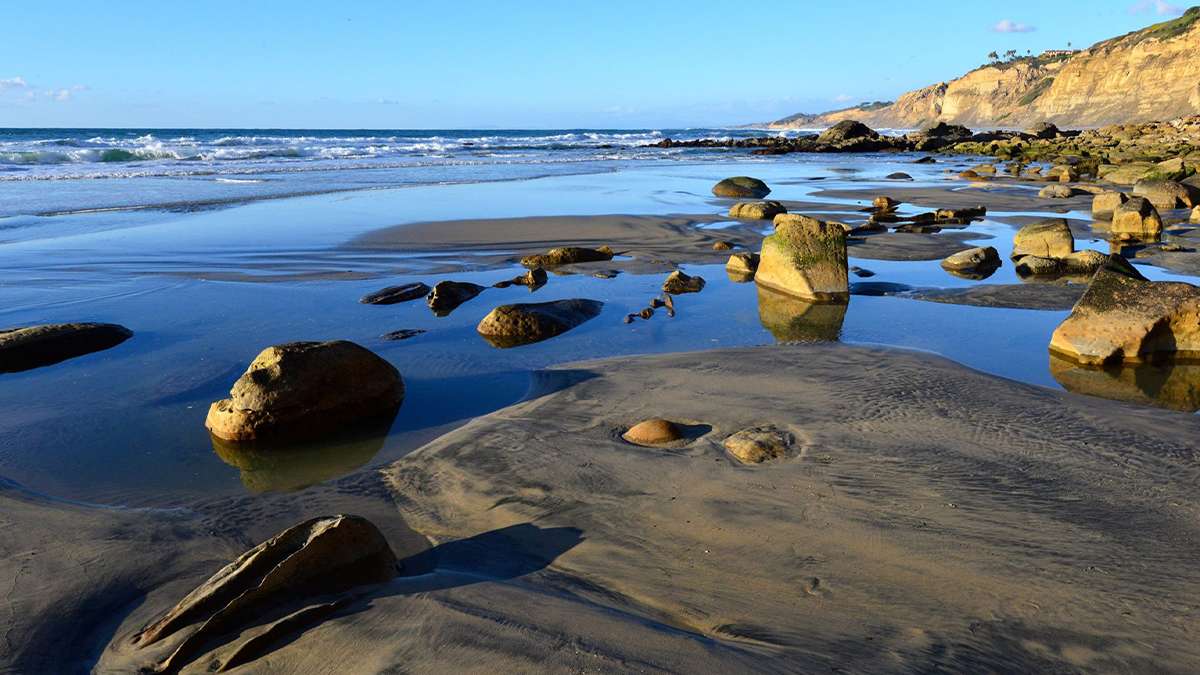
Don’t forget about the spectacular natural scenery that surrounds these tide pools, either. With its craggy, rocky area sculpted by ocean waves and natural elements, Dike Rock provides the perfect backdrop for visitors. The best time to visit this alluring spot is during a low tide, which exposes the tide pool area and puts an array of San Diego tide pool animals on vibrant display.
La Jolla Cove
Difficulty: Varies. Some have easy access points, but others require scrambling.
Resting on the outskirts of the world-renowned La Jolla Underwater Park, La Jolla Cove is a marine sanctuary teeming with vibrant and unique marine life. This compact, picturesque cove, with its dramatic cliffs and stunning sunsets, boasts some of the best tide pools in San Diego.
Related Post: Things to Do in La Jolla, California – 9 Must-Try Activities
As the waves recede during low tide, captivating treasures reveal themselves in the rocky intertidal zone. From color-shifting sea hares and spiny sea stars to exotically soft sea cucumbers – the undersea spectacle is nothing short of awe-inspiring.
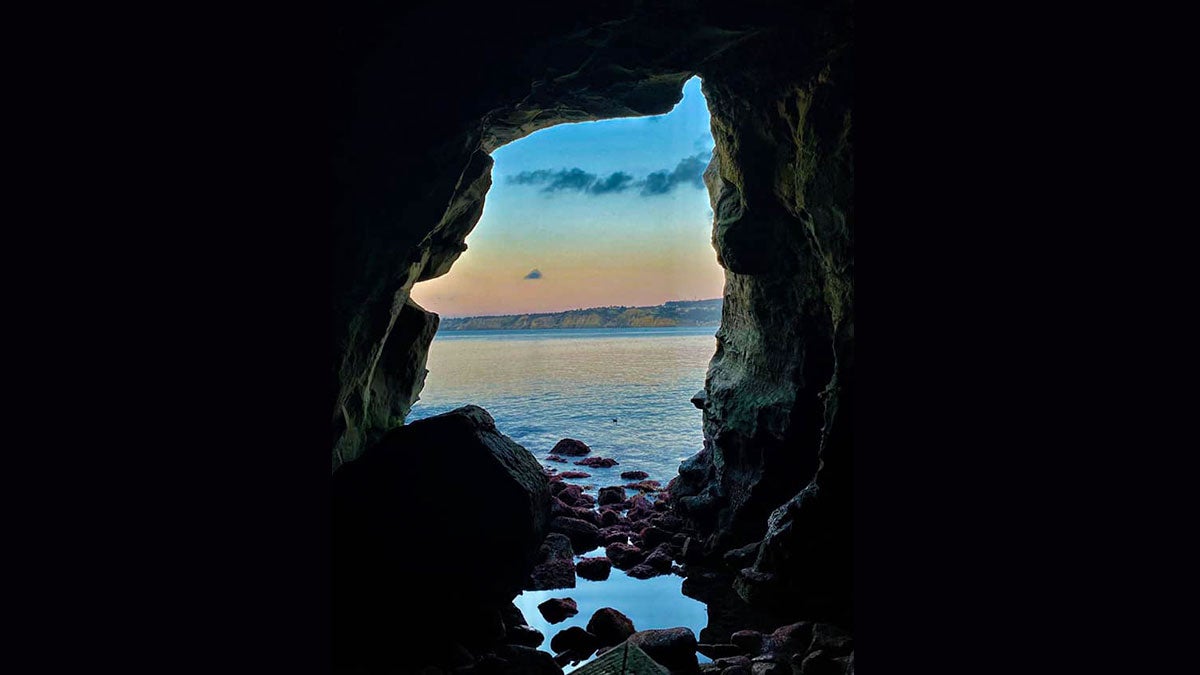
The optimal time to visit is during winter months when the tide drops to its lowest point, exposing a wider range of species otherwise hidden beneath the ocean’s veil. Let the salty air fill your lungs, listen to the soothing rhythm of the waves, and have a close-up encounter with these marine mysteries at La Jolla Cove tide pools.
You can find La Jolla Cove nestled between sandstone cliffs at the end of Coast Boulevard in San Diego. There’s plenty of parking available along the street and a nearby parking garage. For those using public transit, bus route 30 services the area, paving your way to these mesmerizing tide pools in San Diego.
Cardiff State Beach (Cardiff-by-the-Sea)
Difficulty: Easy to moderate, depending on how far you walk
When you visit Cardiff State Beach, you’ll discover an intimate and chill tide pool area designed perfectly for your tide-pooling adventure. It’s the place to go for a stunning view of the shoreline and calm waters that lap onto the rocky area. The intertidal zone here is densely populated with amazing marine life.
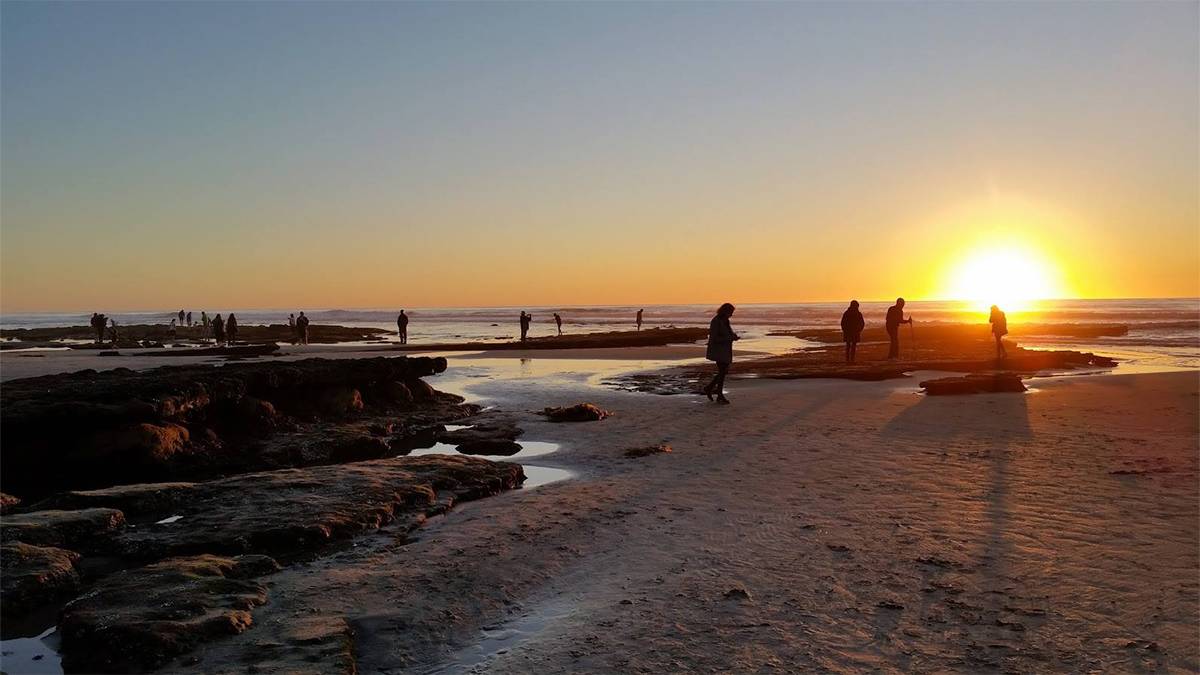
What’s more, it’s one of the best tide pools in San Diego, and it has a reputation for providing its visitors with unforgettable tide pool spotting experiences. So don’t be shocked when you find ‘Cardiff State Beach’ listed as one of the best tide pools in Southern California – it truly is a nature lover’s delight!
Tourmaline Surf Park (Pacific Beach)
Difficulty: Easy
A superb location for tide pooling, Tourmaline Surf Park, situated on Pacific Beach, is a treasure trove of fascinating marine life. As you explore this rocky area, don’t be surprised if you encounter sea hares, starfish, and the occasional sea cucumber. Its smaller tide pools are often less crowded and great for tide pooling with kids.
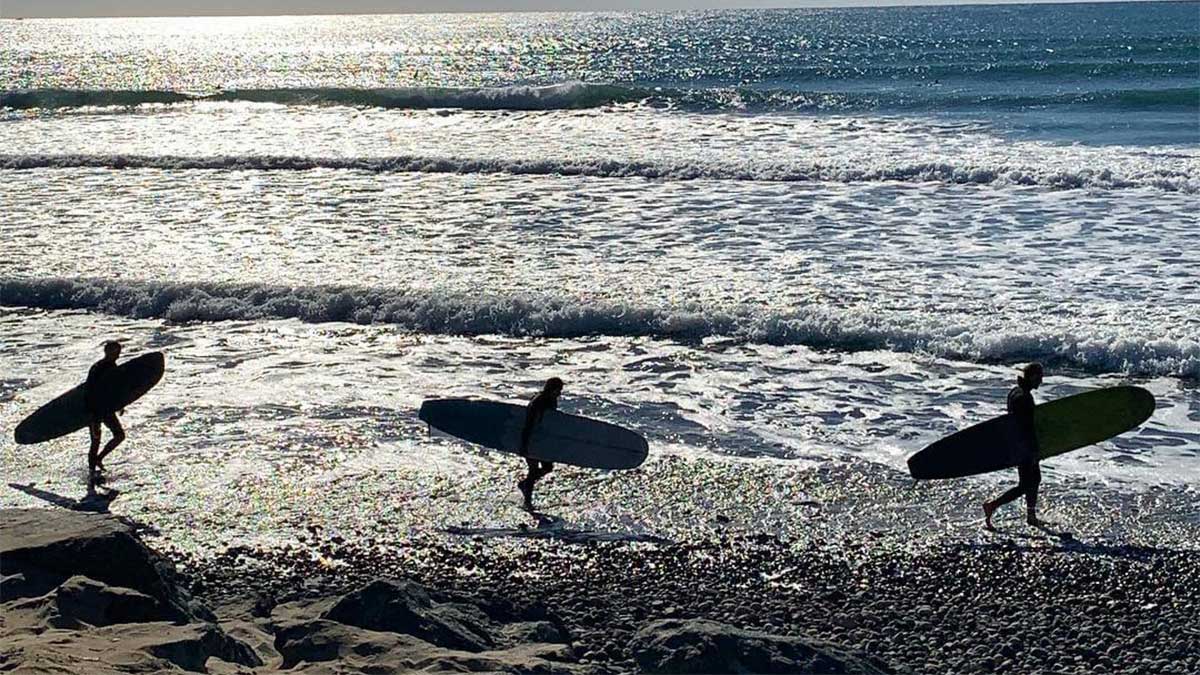
This location is a part of the vast La Jolla underwater park, thus offering a biodiverse intertidal zone. Being one of the best tide pools in San Diego, Tourmaline Surf Park becomes an exploratory journey for those smitten by the marine world. Remember to factor in the tide schedule to maximize your sightseeing opportunities.
Tide Pools Near Hotel del Coronado
Difficulty: Easy
Just a few steps away from the celebrated Hotel del Coronado, you’ll discover an astonishing blend of sandy spots and tide pools teeming with a diverse array of marine life. This tidepooling location in San Diego offers you a chance to witness some of nature’s finest marine species in their natural habitat.
Providing both an enjoyable beach experience and an educational peek into marine ecosystems, this spot affirms itself as one of the must-visit tide pools in San Diego. Do bear in mind, however, that while tide pool spots near popular beaches can be captivating, taking care of these delicate ecosystems should always be a priority.
False Point (Bird Rock – La Jolla)
Difficulty: Moderate (short hike required in addition to rocks)
If you’re someone who likes to explore off the beaten path, then False Point tide pools in the Bird Rock area of La Jolla might be just what you’re looking for. This rocky area, located just north of Scripps Pier, presents an adventurous alternative to the better-known tide pool spots in San Diego.
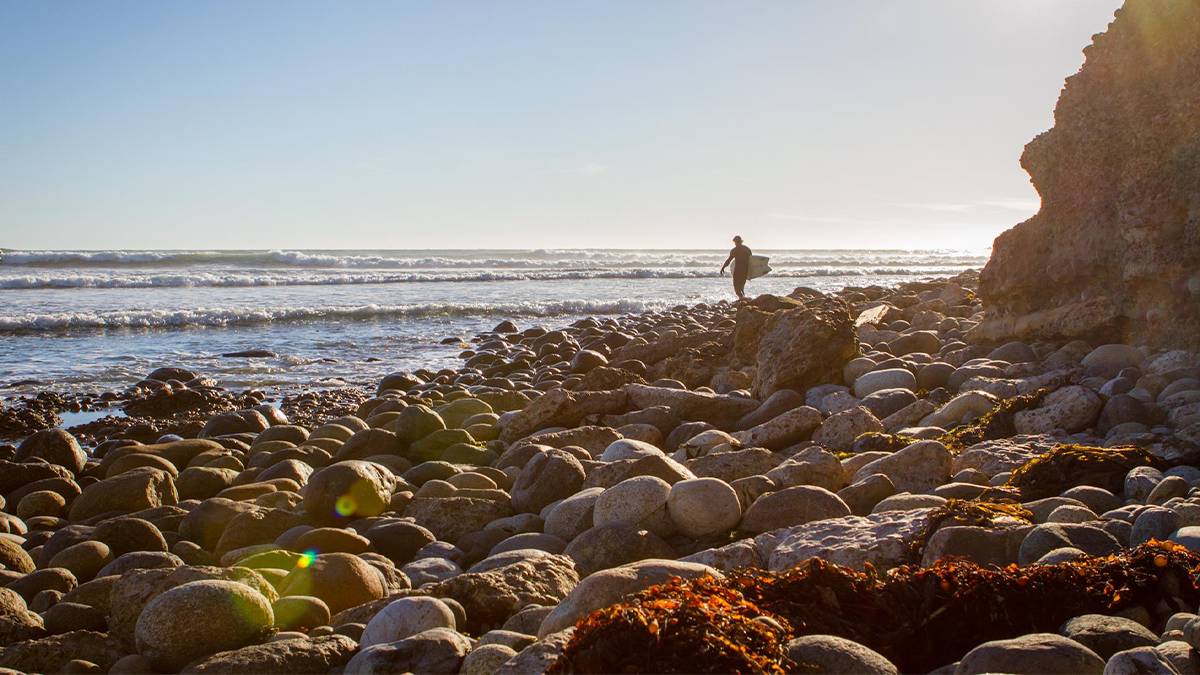
Exploring these tide pools contributes for a more adventurous feel and provides a glimpse into the diverse marine life inhabiting the tidal zone. Acquaint yourself with small tide pool creatures while immersing yourself in the raw beauty of the San Diego coast. To have the best experience, make sure you plan your visit during low tide so you can safely navigate the rocky terrain and bring your comfortable shoes.
Shell Beach Tide Pools (La Jolla)
Difficulty: Moderate (walk down to the beach, then over rocks)
Once you make the short journey to Shell Beach Tide Pools in La Jolla, prepare to be amazed by the intimate glimpse it offers into San Diego’s diverse marine life. Known as one of the La Jolla tide pools San Diego has to offer, this part of the La Jolla Underwater Park serves as a haven for a fascinating array of creatures, from curious sea hares to exquisitely patterned sea stars.
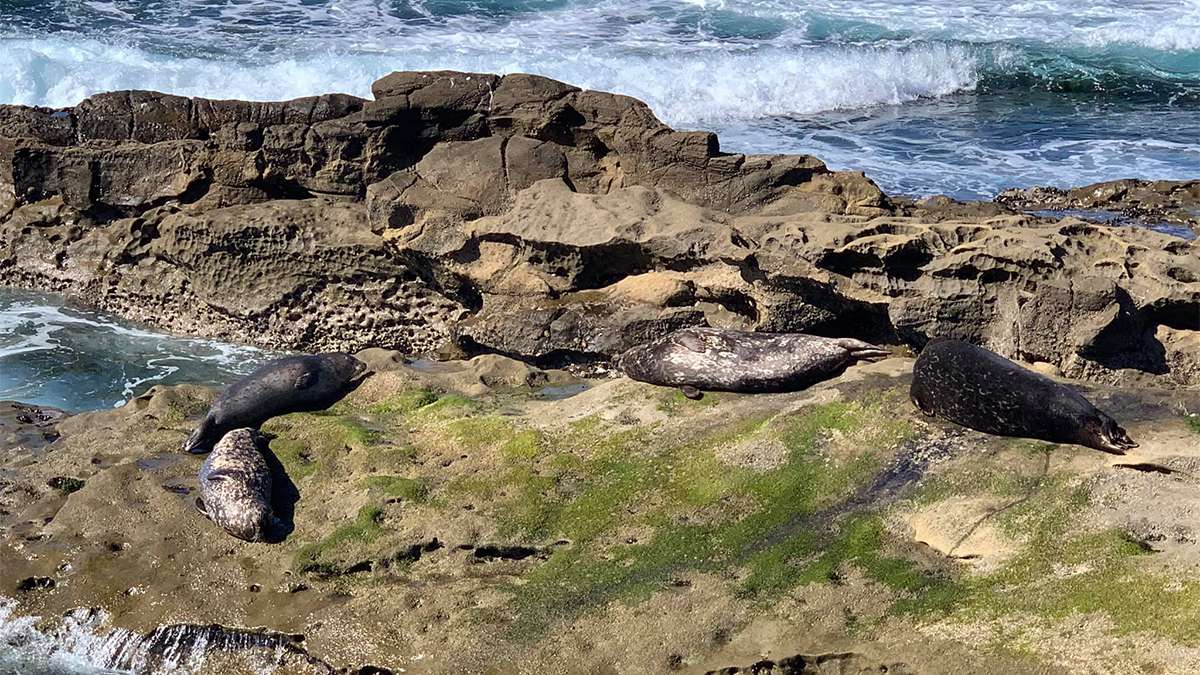
As you carefully navigate the rocky area of the intertidal zone, remember to tread lightly to avoid disturbing these delicate ecosystems. Don’t be surprised if you spot the occasional sea cucumber joining in this marine display. Tide Pool Plaza is also located nearby, another tide-pooling spot worth exploring while there.
Seacoast Drive (Imperial Beach)
Difficulty: Easy to moderate
Exploring the varying tide pools along Seacoast Drive in Imperial Beach can be a marine lover’s paradise, especially when the tides have revealed an exciting rocky area. This expansive stretch of coastline, renowned for the best tide pools in San Diego, arcs invitingly into the horizon, exposing a mesmerizingly beautiful intertidal zone when the sand is washed away.
Related Post: Best Beach in San Diego: Top 13 Gorgeous Beaches for Sun, Sand, and Surf
Time your visit to coincide with low tide and you’ll have the opportunity to witness an underwater world teeming with life without even dipping a toe into the ocean.
Swami’s Beach (Encinitas)
You’ll find that the journey to the tide pools in Swami’s Beach is as exciting as the destination itself. After descending the stairs, head south where the beach morphs into a rocky area, and that’s where the exploration begins. Here, the low tide reveals a mesmerizing spectacle of tide pools that host a myriad of marine life.
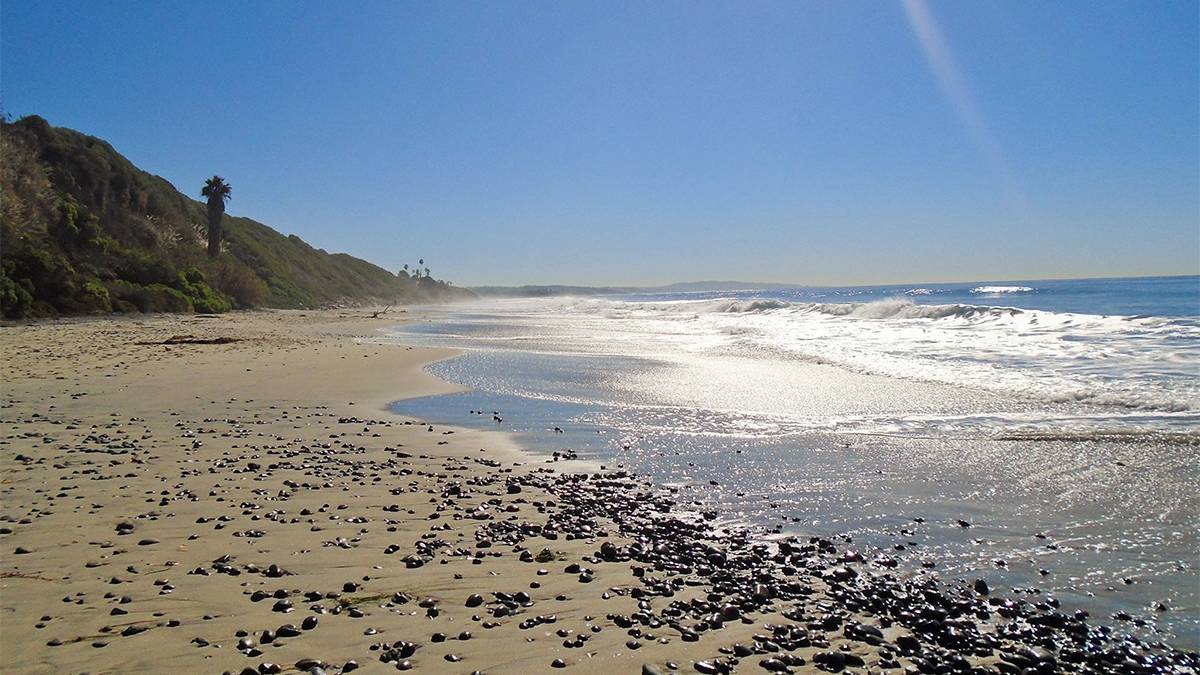
Along with the allure of San Diego’s tide pooling, this location is a classic surf spot, witnessing turquoise waves that attract surfers from all around. Whether you’re a tidepooler, a surfer, or simply a nature lover, this unique blend of activities at Swami’s Beach distinguishes it as one of the best tide pools in Southern California.
San Diego Tide Pool FAQs
Can you Swim in Tidepools San Diego?
Swimming in tide pools in San Diego is generally not recommended due to the fragile nature of these unique ecosystems. The tide pools are home to a myriad of marine life, and human activity could disturb their delicate habit. Instead of swimming, consider observing and enjoying the biodiversity these tide pools offer from a safe distance.
Plan a Worry-Free San Diego Vacation
Why not make your San Diego adventure flawlessly memorable with a curated vacation package on Tripster? Secure the best deals by bundling discount tickets to San Diego’s top attractions with hotel stays at unbeatable rates. The bonus? There’s an abundant selection of hotels conveniently located near the best tide pools San Diego has to offer, ensuring get a successful search when you type “tide pools near me”.
We’d Love to Hear From You!
Which tide pool in San Diego is your favorite? Leave a comment below!